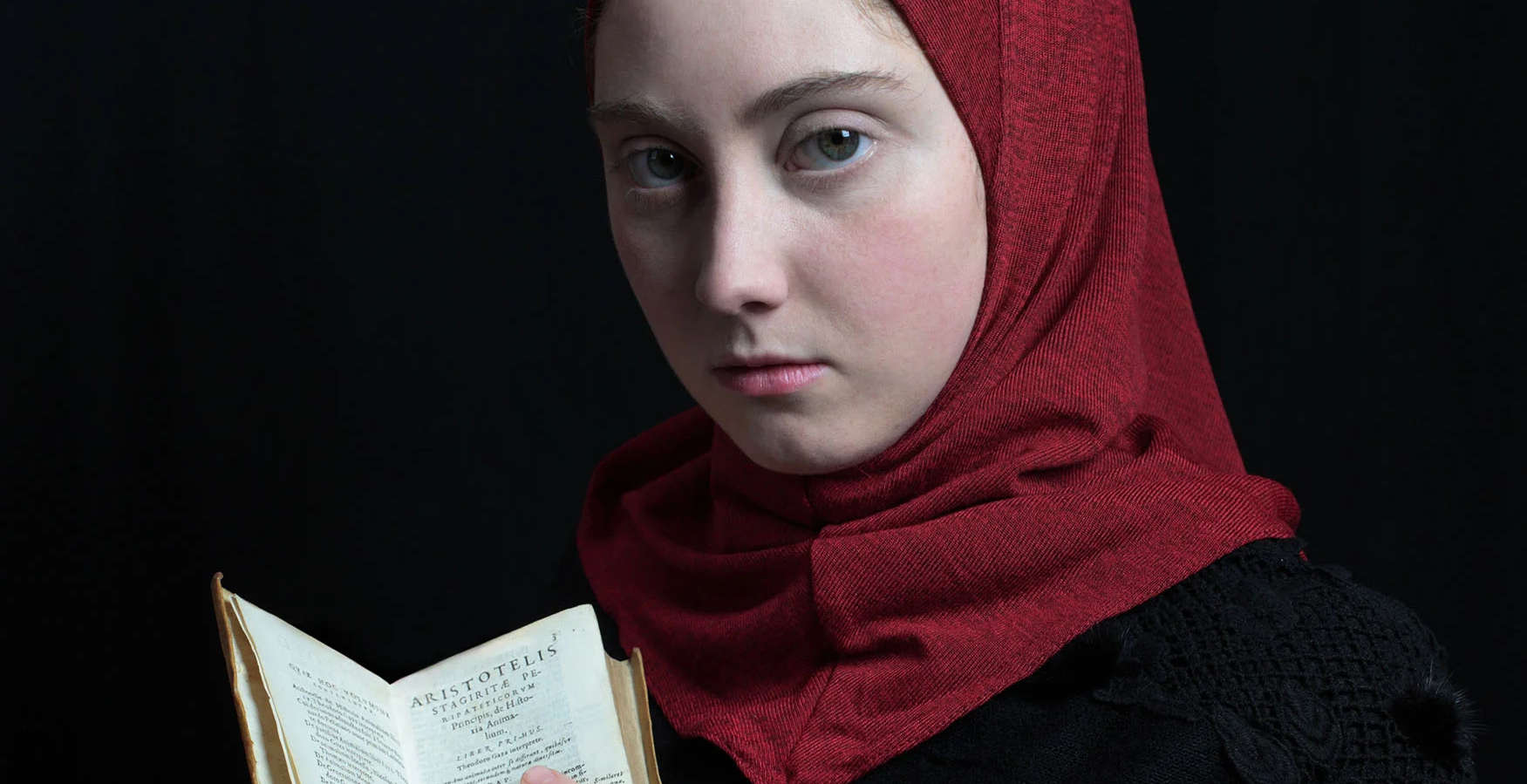The photographic exhibition Re-Velation by Carla Iacono, organized in collaboration with Visionquest 4 Rosso of Genoa, opened on August 5 at the Ignazio Cerio Capri Center Museum. The exhibition project, curated by Marina Guida, is promoted by the Capri Museum and sponsored by the City of Capri and the Municipality of Anacapri. Re-Velation revolves around the symbolic value of the hijab, the veil that frames the face of Islamic women, covering only their hair. Declined in different ways, sometimes with explicit references to specific cultures, sometimes in a fairy-tale or surreal way, the veil becomes a medium of symbolic contamination between East and West. With her Re-velation series, Carla Iacono delves into history to “reveal” a range of valences and meanings with sincere and refined images, fully respecting the differences and similarities of cultures.
The artist’s compositions are reminiscent of seventeenth-century Flemish portraits. The subject is photographed against a uniformly dark background that often blurs into clothing. Side light brings the figure out of the darkness, revealing facial features and veil details, thus symbolically and aesthetically reinforcing the concept of revelation. Formally, the portraits in Revelation all have the same protagonist, the artist’s young daughter; this is to avoid placing emphasis on the origin of the subject, but to invite reflection solely on the polysemy of the symbol, going beyond the specifics of country or religion. Moreover, the autobiographical element contributes, as in Iacono`s other previous works, to emphasize the representation and make it a genuine testimony.
At a time when the veil continues to be a point of contention and a topic of heated debate, the exhibition proves to be topical and provocative, inviting the public to reflect on the ambiguities and contradictions inherent in this ancient symbol, which, even today, depending on the context in which it is adopted, can protect, conceal, beautify or become a bulwark of identity claim and a fulcrum of a desirable intercultural dialogue.
In reality, precisely the plurality of attributable meanings and the evocative power of the veil make its definition complex: the symbolism of the veil changes, in fact, according to the social context in which it is dropped, often with unbridgeable differences between those who wear it and those who perceive it.
Re-velation is not only meant to be a work of denunciation on instrumentalization, but also a work related to the main theme of Carla Iacono’s artistic work, namely the analysis of rites of passage. In classicalIslam, the veil sanctions precisely the transit from childhood to puberty, claiming the respect due to the woman who would thus be protected from the “impure” gazes of men. Similarly, referring to other epochs, cultures and religions, the veil, when used, is always linked to events/situations of initiatory value (e.g., marriage, mourning, monastic status in Christian symbology) or assimilated to a “status symbol” (e.g., for noblewomen in ancient Jewish society or in the case of the veil in the19th century).
Crossing epochs and cultures, Iacono highlights how this object remains a powerful and controversial symbol, worn by noblewomen, madonnas, sibyls, priestesses, prostitutes and courtesans, brides, queens, odalisques, nuns, mistresses and unconventional female figures; capable of exalting the feminine and emphasizing the social and cultural tensions around the figure of women, between concealments and revelations, censures and claims.
From the comparison of the various interpretations, therefore, comes the realization that it is fundamental for a truly modern and pluralistic society to restore the symbols of traditions to their value, that is, to re-actualize them and not ban them but, at the same time, to be vigilant so that there are no impositions, remembering that the use or non-use must be a free choice.
For all information, you can visit the official website of the Ignazio Cerio Caprense Center Museum.
 |
| In Capri, Carla Iacono's photo exhibition dedicated to the hijab |
Warning: the translation into English of the original Italian article was created using automatic tools. We undertake to review all articles, but we do not guarantee the total absence of inaccuracies in the translation due to the program. You can find the original by clicking on the ITA button. If you find any mistake,please contact us.